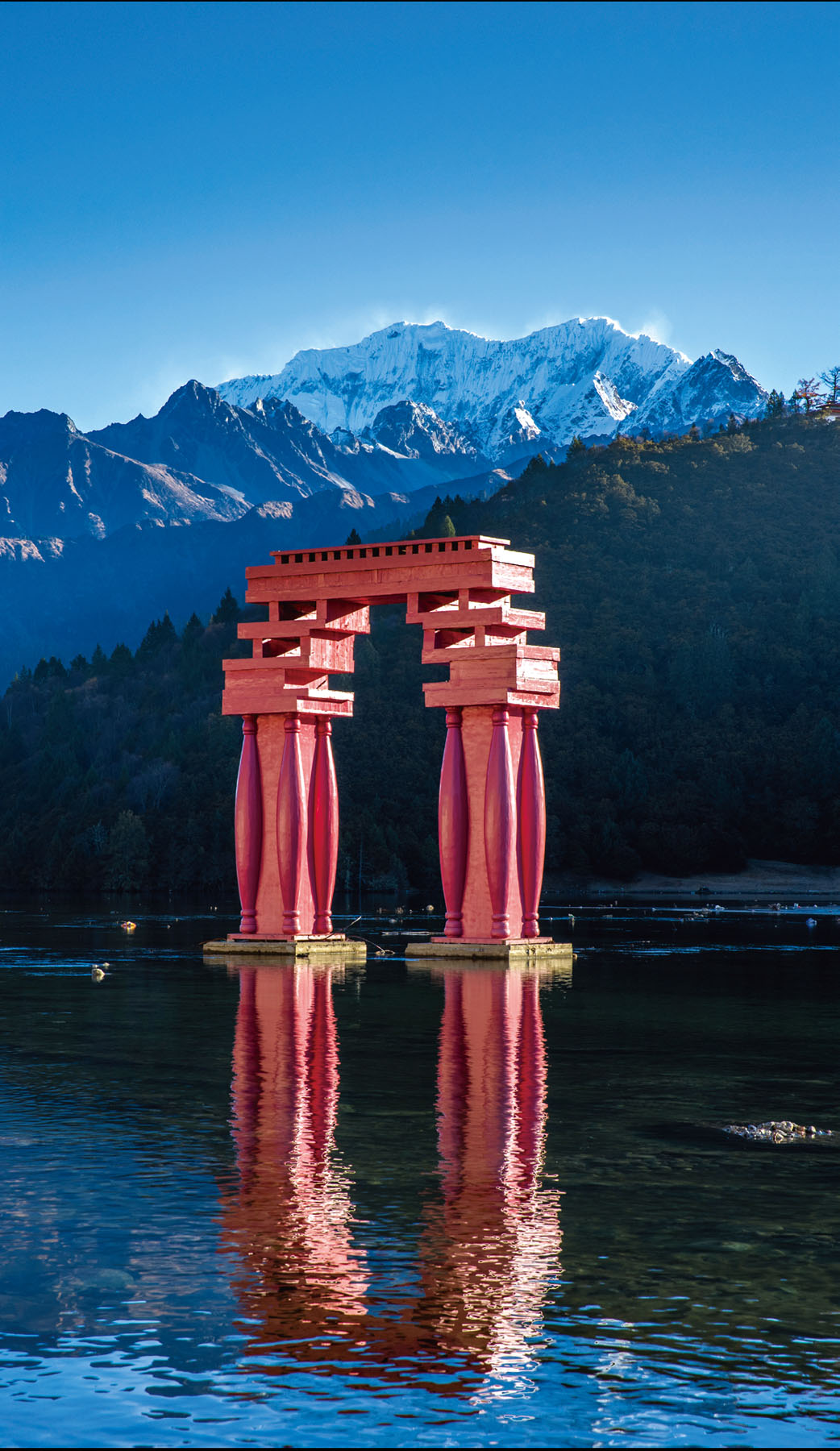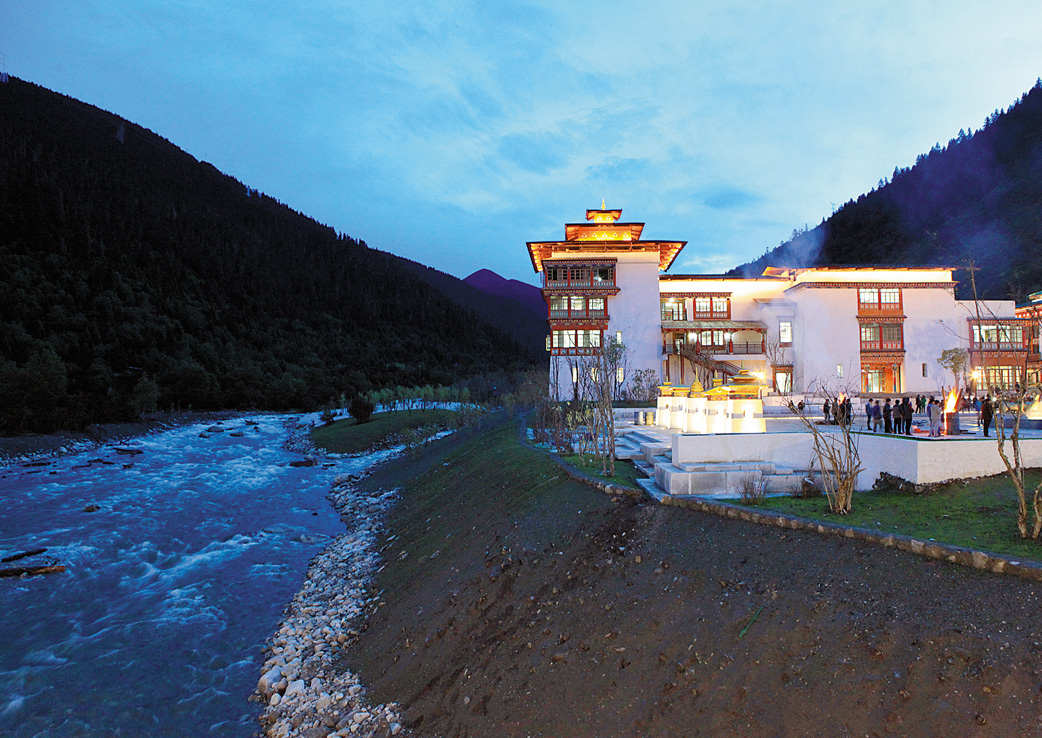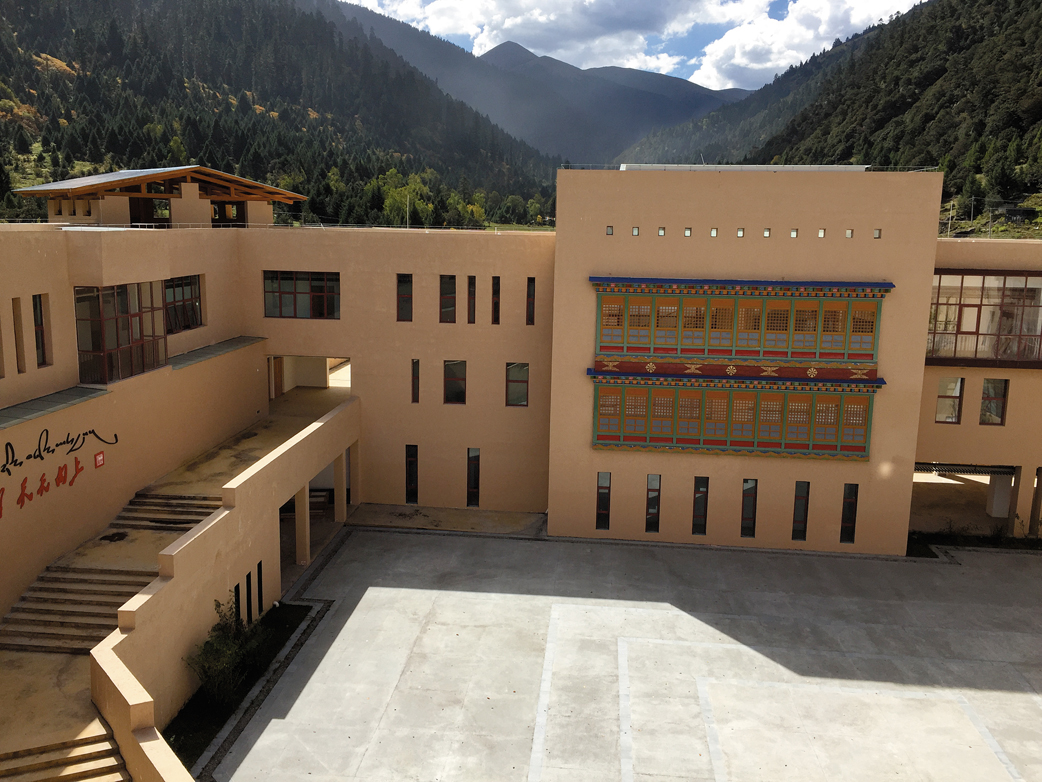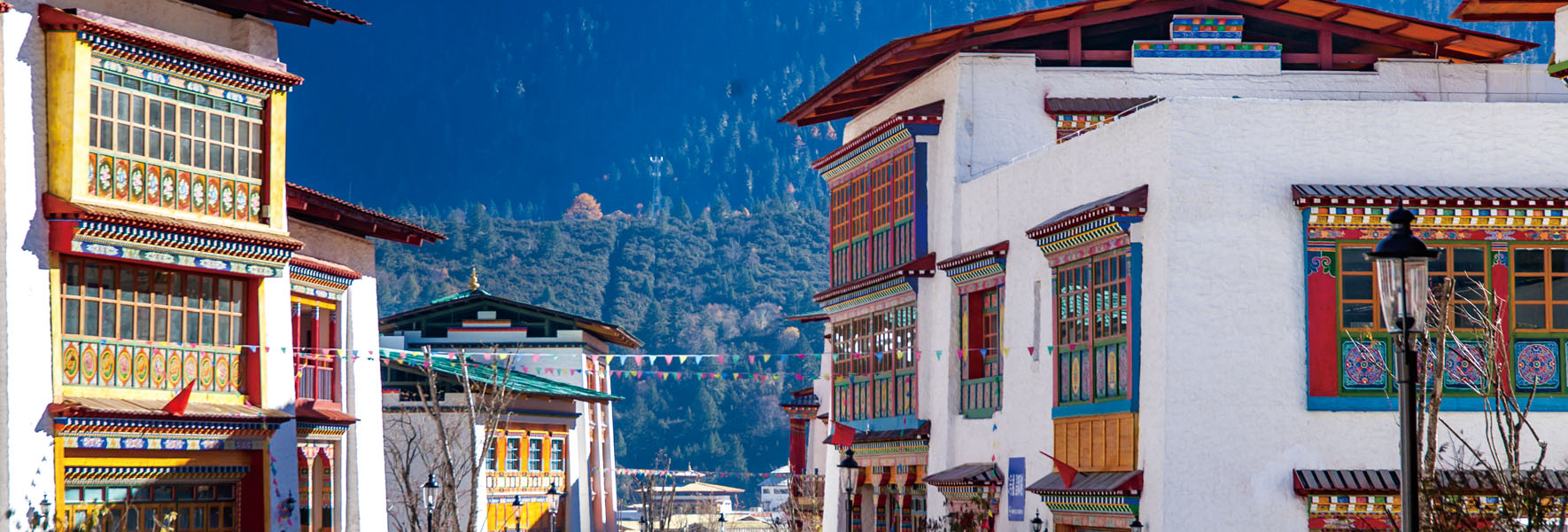[Interview by China Culture Daily] Chen Keshi: Lulang Town, modern interpretation of traditional Tibetan Architecture
Loading...
![]() 2017-04-29
2017-04-29

Lulang international tourist town has adopted the "chief designer responsibility system". In 2012, Peking University and Shenzhen Graduate School of Peking University received a letter of invitation from the people's Government of Guangdong Province to hire Chen Keshi as the chief designer of Lulang international tourist town project. At that time, the preliminary planning and design scheme of Lulang international tourist town designed by Chen Keshi was highly praised by Guangdong Province and Tibet Autonomous Region. In order to ensure the high-quality completion of the planning, design, organization and implementation of Lulang international tourist town project, and learn from the successful practice of the post disaster reconstruction project of Shuimo Town, Wenchuan County, Sichuan Province, Guangdong Province has decided to hire the China urban design and research center of Peking University as the chief consultant for the planning and design of Lulang international tourist town, and Chen Keshi, the director of the center, as the chief designer of Lulang international tourist town project. According to the principle of chief designer responsibility system, Be fully responsible for the overall coordination of planning, design and engineering design of the town, as well as the quality control of the whole process of architectural design and landscape design. In April of the same year, Zhu Xiaodan, then governor of Guangdong Province, Xu Shaohua, executive vice governor, and Li Chunhong, director of the provincial development and Reform Commission, issued the letter of appointment of "chief designer of Lulang international tourist town project" to Chen Keshi. The chief designer responsibility system is a system usually adopted by European and American countries in the construction of important projects and construction projects. It is a method to ensure the final success of the project. Its core value is that the chief designer participates in the whole process from engineering design to construction, so as to ensure the implementation of the project according to the original design concept. The chief designer can be a person or a team. The chief designer is responsible for the overall project, from planning, scheme design, scheme deepening and coordination and control of various professional types of work to the completion of the project. In the process of design and project construction, when the opinions of all interested parties differ, it can be properly solved through the coordination of the chief designer. Six years of practice shows that the implementation of the chief designer responsibility system is the most important method and mechanism guarantee for the successful design and construction of Lulang international tourist town.
Lulang international tourist town not only inherits the traditional architectural culture of Tibet, but also creates the beauty of contemporary Tibetan architecture, which has become a modern interpretation of the artistic elements of traditional Tibetan architecture. Originality and artistry are the life of architecture. As the chief designer of Lulang international tourist town, Chen Keshi firmly believes that only the nation that creates great art can be respected by the world. Because of this, a creator who takes art as his life has always adhered to his original intention and mission - to create the world cultural heritage of contemporary Tibet. Recently, Chen Keshi was interviewed by reporters to tell the story behind Lulang international tourist town.

Reporter: as a key project of assisting Tibet in Guangdong Province, what are the requirements of the CPC Guangdong Provincial Committee and the provincial government for the planning of Lulang international tourist town?
Chen Keshi: at the beginning of the launch of the Lulang international tourist town project, the leaders of the Guangdong provincial Party committee and the Sixth Batch of cadres assisting Tibet had clear expectations - aiming at the world-class and building a tourism destination with the largest scale, the most complete functions and the highest standards in Southeast Tibet.
In 2011, when Zhu Xiaodan, then governor of Guangdong Province, inspected, he asked that the planning and design must be solid and detailed, and strive to come up with a perfect plan. If the plan is not passed, the construction will not start. Zhu Xiaodan said that he was deeply moved when he visited Shuimo town in Wenchuan.
In May 2011, Zhu Xiaodan and I met for the first time in Shenzhen Wuzhou Hotel. We had a four hour discussion on the design scheme of Lulang project. I remember that the first sentence he said when he saw me was "Professor Ke Shi, I'm here to worship my teacher today", which gave me a feeling of courtesy to virtuous corporal.
Zhu Xiaodan said that Lulang has unique natural conditions and should be designed as an "international tourism town". He has been to Lulang for many times and was deeply impressed by the snow mountains and wild flowers in Lulang in summer. He believes that the most attractive thing about Lulang is its magnificent landscape, including snow mountains, grassland and 10000 mu forest sea. He also proposed that "holiness and tranquility" should be regarded as the highest level of town design.

A few days after this meeting, Zhu Xiaodan asked his secretary to recommend an article to me. This article mainly explains the concept of "tranquility is an aesthetic realm". After reading it, I also think "holiness and tranquility" should be the soul of Lulang international tourist town. Therefore, the word "holy and quiet" has become the ultimate goal of Lulang town design. Of course, we should also highlight "Tibetan culture, natural ecology and modern fashion".
Reporter: should the design of Lulang international tourist town integrate local architectural elements?
Chen Keshi: what we see around Lulang is mainly the harmonious extension of folk houses and countryside. It is a detailed and beautiful pastoral scenery, and the result of the integration of architectural pattern and regional customs for thousands of years.
Lulang's traditional residential style is very precious. Lulang town we see now still maintains a large number of local residential styles, such as architectural scales, colors and patterns. At the beginning of the design, we also went to Lhasa, Nyingchi and other places to investigate local aid projects to Tibet. We found that many buildings simply understand the regionality as adding some local architectural symbols, which is a pity, because the symbols cannot completely express the architectural connotation, and the actual effect is not ideal. Regionality is not only a symbol, but also the use of regional traditional materials and the study of space. Nyingchi is rich in wood, and the building materials have always been mainly wood and stone. At the same time, the rainy season in Nyingchi is long, and the roofs are mostly slope roofs, which is different from the flat roof buildings in other areas of Tibet. Therefore, the materials we use in the design are localized as much as possible, and local stone and wood are used as much as possible. However, in civil buildings, the sound insulation and heat preservation effect of wood partition wall and floor is not very good, so later the floor still used concrete, which is generally a combination of traditional and modern architectural technology.
Reporter: the architectural style we see now is different from the original style of gongbujiangda Tibetan folk house. It looks much concise, which makes the integrity and beauty of Lulang project very high. Do you recognize this difference?
Chen Keshi: Yes, there are differences. The formation of the original residential style in gongbujiangda is determined by the local materials and the practicability extended by the impact of the local environment. On the basis of these two, we integrate modern architectural technology and create a brand-new Tibetan architecture through artistic processing.
Reporter: what is the artistry to explain this new Tibetan Architecture?
Chen Keshi: artistry is the highest requirement of Lulang international tourist town. Potala Palace is listed as a world cultural heritage. Its most conquering place lies in its artistry. In my opinion, there is no palace architecture in the world that can compare with the Potala Palace in artistic expression.
Artistic creation should be said to be the greatest value of Lulang town. Lulang's natural scenery is very beautiful, but natural scenery cannot represent art because it is not created by human beings. Whether the design of Lulang town can be given 100 points mainly depends on the artistry. The function of architecture is easy to realize, but the artistry is difficult to realize. Artistry is also an important indicator to judge a designer's taste and vision.
Many architects pay more attention to the single building, but I generally pay more attention to the overall large-scale external space. The overall external space is not successful, and the building is flawed no matter how successful it is. We adopt the chief designer responsibility system from urban design scale, planning scale to architectural design. Everyone has a different understanding of artistry. I prefer the local characteristics and simplicity of materials. Walking into the East Gallery of the Washington Art Museum designed by I.M. Pei, it is easy to be moved by the designer's personal aesthetic quality. Its understanding, arrangement and editing of space, including the opening method of handrails and door and window holes on the wall, many things are very personalized and may also be its most precious place.
Reporter: in the process of planning and design, what details do you think are satisfactory, innovative and national?
Chen Keshi: mainly in the overall space design of the town, it inherits Tibetan traditional architecture and inherits Tibetan architectural art elements in form. For example, building doors and windows, colors, facades and inclined walls are integrated with tradition. More than 300 local Tibetan painters participated in the design of the town. 40 designers of China Reconstruct Institute of Architectural & Urban Design were divided into four 10 person groups and drew nearly 1000 color drawing design drawings.
Reporter: in the construction of the town, are there any places that did not meet the original design requirements?
Chen Keshi: there is a tradition of white worship in Tibetan areas. The oldest houses in Lulang, such as the old houses left in zhaxigang village, are built of stone and then whitewashed outside the wall.
In order to respect local traditions, the practice of building exterior walls is very important. The walls of key buildings such as the main building of Hengda hotel in Central District and the Tibetan opera performing art center are built with stones and painted with white mortar outside the walls. At first, we suggested that the buildings in Lulang town should be built with the kind of rubble in the local traditional folk houses, but after inquiry, we learned that the price of this material is four or five times that of hollow bricks. Later, most of the walls were changed into hollow bricks, which were plastered with cement mortar to make concave convex effect, then plastered with white cement mixture as a whole, and finally painted with white exterior wall paint for protection. The external walls of Evergrande and commercial pedestrian street are very good. However, the white wall of the main building of poly hotel is not strictly designed, and the effect is not good; Townhouse and single family villa rooms were originally designed as earthy yellow with rammed earth texture, but they were not made in the end.
Reporter: your design team has been stationed for three or four years. Are they used to it?
Chen Keshi: we have 9 designers stationed on the site. They all live in the village head's house, and the conditions are very difficult. Every time I go to the construction site, I also live in Tibetan homes, which is the need of project construction. On the one hand, the control building can be carried out according to the design scheme, so that the final appearance can meet our initial expectations. On the other hand, many details must be communicated on site. Our design team has never complained about the difficult environment. They all love Tibet and have deep feelings for Lulang. Love is the beginning of everything. Guangdong cadres assisting Tibet are fans of Nyingchi. Tibet's natural scenery and cultural charm are unmatched in other places. Every time I go to Tibet, I feel my heart washed. Whether the altitude sickness or the difficult conditions are worth our love for Tibet.
Postscript
Over the past 20 years, Guangdong Province has worked hard to complete the upgrading from "blood transfusion" to "hematopoiesis" on the beautiful forest and snow plain of Tibet, from infrastructure assistance to promoting local industrial development. Build an international tourism town in Lulang as the most important tourism distribution center of the Sichuan Tibet line and Yunnan Tibet line, the "most beautiful national highway in China", and help the Tibet Autonomous Region develop into a world tourism destination. The blueprint of Guangdong Province for assisting Xinjiang is changing from ideal to reality.
As a key project of Guangdong's aid to Tibet, Lulang international tourist town project lasted six years. Zhu Xiaodan, then governor of Guangdong Province, listened to the scheme introduction 18 times and presided over the coordination meeting at Lulang construction site 12 times, sending courage and confidence to everyone at the most difficult time of the project. Ma Xingrui, governor of Guangdong Province, Xu Shaohua, member of the Standing Committee of the CPC Guangdong Provincial Committee and deputy director of the Standing Committee of the Guangdong Provincial People's Congress, as well as the current and current leaders of the Tibet Autonomous Region, such as Chen Quanguo, luosangjiang village, Baima Chilin and Ding Yexian, all gave deep concern to the project and spared no effort to coordinate and promote the project in the process of engineering design and construction. Of course, there are lovely construction workers who fight on the front line of the construction site day and night.
As the chief designer of Lulang international tourist town project, Chen Keshi has led graduate students and design teams to inspect Tibetan buildings in northern Tibet, southern Tibet, Nyingchi, Ganzi and ABA for more than 30 times, and collected more than 100000 pictures. It has become a rare life experience to exchange Tibetan architectural design and construction technology with local experts and craftsmen and enter the project site for careful planning and design.
Lulang international tourist town project was originally entrusted to the planning and design of American LQI architectural design company. However, at the design scheme review meeting in April 2011, LQI architectural design company proposed to build a North American tourist town, which did not express Tibetan culture and architectural tradition. However, the consensus is that Lulang is a treasure of Tibet and should have a strong Tibetan color. Today, the holy and quiet Lulang international tourist town has bloomed beautifully in Tibet, allowing people to see the creativity and wisdom of Chinese architects represented by Chen Keshi, who are attracting more and more attention in the world.
Recommended news
Chen Keshi | The urban design scheme of Motuo County, Xizang passed the expert review meeting
Recently, the urban design scheme of Motuo County, Xizang, completed by the Zhongying Urban Design Team led by Professor Chen Keshi, passed the expert review and was highly recognized by the experts present.
2025-10-14
Chen Keshi | The urban design scheme of "Paizhen Huacheng" in Linzhi, Xizang, passed the expert review and was highly recognized by the leaders of the autonomous region
Recently, Wang Junzheng, Secretary of the Communist Party of China Tibet Autonomous Region Committee, listened to a report by Professor Chen Keshi from Zhongying Urban Design Team on the urban design plan for "Paizhen Flower City" in Nyingchi. He emphasized the need to base the project on the positioning of a "characteristic town," seize the historical opportunity, refine ethnic elements, and develop a unique architectural style that "externally showcases ethnic features while internally embedding modern functionality."
2025-09-08
上一篇:Huangshan Chinese Painting and Calligraphy Town | Artist Hotel Design
下一篇:Tuocheng - Guangdong's millennium old city will return to glory
Return to list